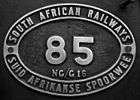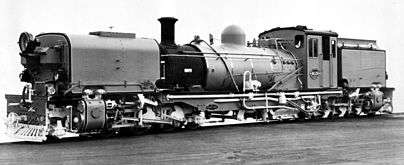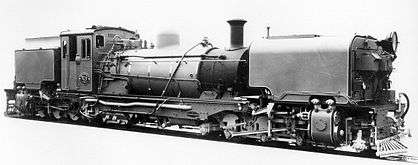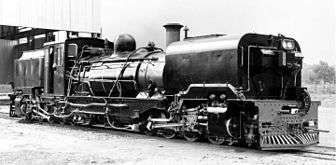South African Class NG G16 2-6-2+2-6-2
| South African Class NG G16 2-6-2+2-6-2 | |||||||||||||||||||||||||||||||||||||||||||||||||||||||||||||||||||||||||||||||||||||||||||||||||||||||||||
|---|---|---|---|---|---|---|---|---|---|---|---|---|---|---|---|---|---|---|---|---|---|---|---|---|---|---|---|---|---|---|---|---|---|---|---|---|---|---|---|---|---|---|---|---|---|---|---|---|---|---|---|---|---|---|---|---|---|---|---|---|---|---|---|---|---|---|---|---|---|---|---|---|---|---|---|---|---|---|---|---|---|---|---|---|---|---|---|---|---|---|---|---|---|---|---|---|---|---|---|---|---|---|---|---|---|---|---|
|
No. NG113 at Sandstone Estates, 9 April 2006 | |||||||||||||||||||||||||||||||||||||||||||||||||||||||||||||||||||||||||||||||||||||||||||||||||||||||||||
| |||||||||||||||||||||||||||||||||||||||||||||||||||||||||||||||||||||||||||||||||||||||||||||||||||||||||||
| |||||||||||||||||||||||||||||||||||||||||||||||||||||||||||||||||||||||||||||||||||||||||||||||||||||||||||
| |||||||||||||||||||||||||||||||||||||||||||||||||||||||||||||||||||||||||||||||||||||||||||||||||||||||||||
| |||||||||||||||||||||||||||||||||||||||||||||||||||||||||||||||||||||||||||||||||||||||||||||||||||||||||||
The South African Railways Class NG G16 2-6-2+2-6-2 of 1937 is a narrow gauge steam locomotive.
Between 1937 and 1968, the South African Railways placed 34 Class NG G16 Garratt articulated steam locomotives with a 2-6-2+2-6-2 Double Prairie type wheel arrangement in service on the Avontuur Railway and on the Natal narrow gauge lines.[1][2]
Manufacturers
The success of the Class NG G13 narrow gauge Garratts that were introduced by the South African Railways (SAR) in 1927 led to a decision that any additional narrow gauge articulated locomotives would be of the same design. Altogether 34 more 2-6-2+2-6-2 Double Prairie type narrow gauge locomotives were built, spread over five orders from three manufacturers over a span of 32 years.[2][3][4][5]
Cockerill
In 1937, Société Anonyme John Cockerill of Seraing in Belgium delivered four new 2-6-2+2-6-2 locomotives, numbered in the range from NG85 to NG88, which were so similar to the older locomotives that they were initially designated Class NG G13 as well. However, in view of the fact that all the carrying wheels were fitted with roller bearing axle boxes and arranged as swiveling pony trucks, compared to the Class NG G13 of which the inner carrying wheels were built to the Gölsdorf system which allowed the axle some lateral movement, it was soon decided to reclassify them to Class NG G16.[2][4]
These pre-war locomotives, like the earlier Class NG G13 locomotives, were built with riveted coal and water bunkers and with elliptical tops on the water tanks.[1]
Beyer, Peacock
The second order of eight locomotives was delivered from Beyer, Peacock and Company in 1939. They were numbered in the range from NG109 to NG116.[1][2][3]
The third order was for a further seven locomotives in 1951, numbered in the range from NG125 to NG131, once again from Beyer, Peacock. They still had elliptical tops on the water tanks, but these and the subsequent locomotives had welded water and coal bunkers.[1][2][3]
The fourth batch of seven locomotives, numbered in the range from NG137 to NG143, were the last steam locomotives to be built by Beyer, Peacock and were built to the specifications of the Tsumeb Copper Corporation in South West Africa (SWA). They were mechanically similar to the earlier and subsequent Class NG G16 locomotives, but with a revised coal and water carrying arrangement. These locomotives had an enlarged front water tank capacity, but carried no water in their rear bunkers which consequently had a larger coal capacity. They had flat-topped water tanks with rounded top side edges. It was planned to use them as tank-and-tender Garratts, semi-permanently attached to a water tender for use across the Namib desert in SWA, as was the practice with the Cape gauge Classes GM, GMA and GO tank-and-tender Garratts in South Africa.[2][3][6]
However, while the locomotives were being built, the decision was made to convert all the SWA narrow gauge lines to Cape gauge. In terms of a prior agreement between the SAR and the Tsumeb Copper Corporation, the SAR would purchase any narrow gauge locomotives that would become redundant should the re-gauging of the SWA system take place. The new locomotives were therefore delivered directly to the SAR in 1958.[2]
On the Avontuur Railway, these locomotives were used as tank-and-tender Garratts, but when the Langkloof members of the class were transferred to Natal in 1964, the water tenders were dispensed with since watering points were much closer together in Natal as a consequence of the early use of tank engines on those narrow-gauge branches.[2][6]
Hunslet-Taylor
The final order for eight locomotives in 1967, numbered in the range from NG149 to NG156, turned out to be the last new steam locomotives to be ordered by the SAR. Beyer-Peacock had stopped building steam locomotives after the last batch of Class NG G16 in 1958 and by 1968 they were in the process of closing the business altogether. Since no other overseas manufacturers were available to supply them, they were built by Hunslet-Taylor in Germiston using boilers supplied by their overseas principals, the Hunslet Engine Company in England. Built in 1967 and 1968, these locomotives had the same enlarged capacity front water tanks as those of the Tsumeb group, but their rear bunkers were identical to those of the 1951 batch of locomotives and carried both coal and water.[2][4]
Cabside number plates

After the Official Languages of the Union Act No 8 of 1925 was passed on 8 May 1925, bilingual English and Afrikaans cabside number plates began to appear on SAR locomotives, initially inscribed "SOUTH AFRICAN RAILWAYS" at the top and "SUID AFRIKANSE SPOORWEË" at the bottom. The Afrikaans spelling conventions were changed from time to time in the early years. On postage stamps, for example, it was "Zuid Afrika" from 1913, "Suidafrika" from the airmail stamps of 1925 and hyphenated "Suid-Afrika" from 1933. On cabside number plates, the spelling of the Afrikaans inscription was later altered with "AFRIKANSE" changed to "AFRIKAANSE" and with "SUID AFRIKAANSE SPOORWEË" unhyphenated, and stil later to "SUID-AFRIKAANSE SPOORWEË" hyphenated.[7]
The Cockerill-built locomotives were delivered with bilingual cabside number plates inscribed "NG/G13" and with the older style Afrikaans "SUID AFRIKANSE SPOORWEË" at the bottom. When they were designated Class NG G16, the "NG/G13" was altered to "NG/G16" by milling out the 3 and riveting on a 6, as shown.[2]
Service
The Cockerill locomotives, numbers NG85 to NG88, remained in Natal for most of their service lives.[1][2]
The Beyer, Peacock locomotives ordered by the SAR, numbers NG109 to NG116 and NG125 to NG131, were shared more or less equally between the Natal and Langkloof lines.[1][2]
The seven Beyer, Peacock locomotives ordered by the Tsumeb Copper Corporation, numbers NG137 to NG143, were initially distributed between the Umzinto, Port Shepstone and Avontuur lines, but in 1964 the three that went to the Langkloof were also transferred to Natal.[1][2][6]
The Hunslet-Taylor locomotives, numbers NG149 to NG156, were placed in service on the Harding and Donnybrook branches in Natal in 1968.[1][2]
When the lower section of the Avontuur line was dieselised upon the arrival of the Class 91-000 diesel-electric locomotives in 1973, all the Class NG G16 locomotives still in service were transferred to various branches in Natal, where they remained until they were withdrawn from service.[2]
Class NG G16A
When the four Natal narrow gauge systems were closed down by the SAR, the Weenen and Mid-Illovo lines were lifted, but the Harding line was privatised as the Alfred County Railway (ACR), operating out of Port Shepstone.[1]
As part of their strategy to keep the railway competitive, two of the ACR's Class NG G16 locomotives were rebuilt using technology similar to that used in the Cape gauge Class 26 Red Devil. The rebuilding incorporated a gas producing combustion system (GPCS), Lempor exhausts, an improved spark arrester, lightweight multi-ring articulated piston valves, improved valve events and improved mechanical lubrication. The two locomotives which received this treatment, no. NG141 in 1989 and no. NG155 in 1990, were reclassified to Class NG G16A.[8][9]
In comparative testing, no. NG141 achieved a fuel saving of 25% compared to a standard Class NG G16 Garratt, a performance which was easily maintained in regular service. The cost of the work paid off financially within twelve months and led to a proposal to develop a Class NG G17, but that never materialised since the line's farming produce traffic was gradually lost to road transport on the improving road network.[8][9][10]
Preservation
Since withdrawal from SAR service, some locomotives were sold to foreign railways and into private hands and restored to operational condition, while others ended up in various degrees of preservation ranging across the spectrum from running order to staging to total abandonment. In 2017, at least four establishments still operated or were restoring ex-SAR Class NG G16 Garratts.[10] Several however, have now been cut up for scrap (see table below).
Welsh Highland Railway
The Welsh Highland Railway in the United Kingdom owns four Class NG G16 locomotives. One, no. NG140, is undergoing restoration to operating condition while three locomotives, Cockerill-built no. NG87 and Beyer, Peacock-built numbers NG138 and NG143, are kept in excellent condition by this establishment which exhibits great pride in its heritage.[10] In addition, two other Class NG G16s, numbers NG109 and NG130, are based on the line but not owned by the railway. No. NG130 is undergoing a fast track restoration sponsored by its private owner with a ten-year operating agreement with the WHR in place from 2018. No. NG109 is stored as a kit of parts.
Sandstone Estates
The Sandstone Estates near Ficksburg in the Free State is home to a large number of Class NG G16 locomotives, either as the owners or as the custodian for locomotives belonging to individuals or other establishments. Three of their Class NG G16 locomotives are kept in pristine condition and are regularly run during the Estate's annual events like the Cosmos Festival, Cherry Festival, Stars of Sandstone and others. These are Cockerill-built no. NG88, Beyer, Peacock-built no. NG113 and Hunslet-Taylor-built no. NG153.[10]
Puffing Billy Railway
The Puffing Billy Railway, located in the Dandenong Ranges east of Melbourne, Australia, began restoring Class NG G16 no. NG129 and regauging it to 2 ft 6 in (762 mm) as a backup for their Victorian Railways G class Garratt no. G42 at a time of increasing passenger loadings. Completion of no. NG129's restoration was planned to coincide with the next time that no. G42 was to be withdrawn for major maintenance. Faced with the need to manufacture a number of missing parts for no. NG129, the Puffing Billy also purchased no. NG127 and a container of spare parts from a private owner in South Africa. This gave them many of the much needed missing parts and a second almost-complete Class NG G16 which will possibly also be totally rebuilt in the future.[11]
Distribution
The last known fate of all the Class NG G16 locomotives, as of November 1st 2017, are shown in Table I.[10]
South African Class NG G16 2-6-2+2-6-2 locations
No. |
Builder | Country | Location | Notes |
|---|---|---|---|---|
| NG85 | Cockerill | Sandstone Estates | Unrestored, scrap condition.[12] | |
| NG86 | Cockerill | Sandstone Estates | Unrestored, scrap condition.[12] | |
| NG87 | Cockerill | Welsh Highland Railway | Operational. | |
| NG88 | Cockerill | Sandstone Estates | Operational. | |
| NG109 | Beyer, Peacock | Welsh Highland Railway | Purchased by Waterman Heritage Railway Trust in scrap condition during 2009 for future use on the WHR. After failure to gain UK Government backing for his apprenticeship program, the overhaul was stopped. All parts were moved to Dinas where they remain in open storage with no current plans to complete the overhaul.[13] | |
| NG110 | Beyer, Peacock | Sandstone Estates | Unrestored, scrap condition.[12] | |
| NG111 | Beyer, Peacock | Gold Reef City, Johannesburg | On display in excellent cosmetic condition. | |
| NG112 | Beyer, Peacock | Century City, Cape Town | On display in good cosmetic condition, on loan from Sandstone Estates.[12] | |
| NG113 | Beyer, Peacock | Sandstone Estates | In good condition but staged for a boiler overhaul April 2017.[14] | |
| NG114 | Beyer, Peacock | Paddock, KwaZulu-Natal | Scrapped at Paddock, South Africa October 2017 | |
| NG115 | Beyer, Peacock | Exmoor Steam Railway | Stored in unrestored, scrap condition.[15] | |
| NG116 | Beyer, Peacock | Paton's Country Railway, Ixopo, KwaZulu-Natal | Operational from April 2017. Overhauled using parts off 156 including the boiler. | |
| NG125 | Beyer, Peacock | Paddock, KwaZulu-Natal | Scrapped at Paddock, South Africa October 2017 | |
| NG126 | Beyer, Peacock | Paddock, KwaZulu-Natal | Scrapped at Paddock, South Africa September 2017 | |
| NG127 | Beyer, Peacock | Puffing Billy Railway | Unrestored. Sold to the Puffing Billy Railway, Melbourne, Australia by Peter Newton in 2012.[11] Currently on display in the Museum at Menzies Creek station. | |
| NG128 | Beyer, Peacock | Sandstone Estates | Unrestored, scrap condition.[12] | |
| NG129 | Beyer, Peacock | Puffing Billy Railway | Sold to the Puffing Billy Railway in 1996. Total rebuild in process, including a new all-welded steel boiler and conversion to 2'6" gauge. Expected to operate by 2019. | |
| NG130 | Beyer, Peacock | For Welsh Highland Railway | Purchased from the Exmoor Steam Railway by Steam Powered Services (Peter Best) in scrap condition. Now at the WHR Dinas works where it is being restored to operate on the railway. Expected to operate by 2019. | |
| NG131 | Beyer, Peacock | Avontuur Railway Apple Express | Owned by Transnet Heritage Trust. Stored in the former Humewood Road (Port Elizabeth) Narrow Gauge diesel depot in excellent external condition. Awaiting mechanical and boiler assessment. | |
| NG137 | Beyer, Peacock | Sandstone Estates | Unrestored, scrap condition.[12] | |
| NG138 | Beyer, Peacock | Welsh Highland Railway | Operational. | |
| NG139 | Beyer, Peacock | Paddock, KwaZulu-Natal | Unrestored. Ownership transferred to Paddock Motors (Derick Classen) after a court case to resolve unpaid storage fees. Locomotive is for sale. | |
| NG140 | Beyer, Peacock | Welsh Highland Railway | Under low priority restoration to operate on the Welsh Highland Railway. | |
| NG141 | Beyer, Peacock | Sandstone Estates | Rebuilt in 1989 to Class NGG16A, Privately owned by the Mortimer family, in very poor condition with some recent stabilization having taken place.[9] | |
| NG142 | Beyer, Peacock | Paddock, KwaZulu-Natal | Scrapped at Paddock, South Africa September 2017. | |
| NG143 | Beyer, Peacock | Welsh Highland Railway | Operational. The last Garratt built by Beyer, Peacock. | |
| NG149 | Hunslet-Taylor | Paddock, KwaZulu-Natal | Scrapped at Paddock, South Africa August 2017. Engine units sent to Ixopo. | |
| NG150 | Hunslet-Taylor | Sandstone Estates | Unrestored, scrap condition.[12] | |
| NG151 | Hunslet-Taylor | Paddock, KwaZulu-Natal | Unrestored, scrap condition. Ownership transferred to Paddock Motors (Derick Classen) after a court case to resolve unpaid storage fees. Locomotive is for sale. | |
| NG152 | Hunslet-Taylor | Sandstone Estates | Unrestored, scrap condition.[12] | |
| NG153 | Hunslet-Taylor | Sandstone Estates | Operational.[14] | |
| NG154 | Hunslet-Taylor | Humewood Station, Port Elizabeth | Scrapped at Humewood Road, Port Elizabeth, South Africa August 2011.[12] | |
| NG155 | Hunslet-Taylor | Sandstone Estates | Unrestored, scrap condition. NGG16A boiler unit but carries the standard unmodified engine units off 142. 16A engine units cut up at Paddock October 2017[12] | |
| NG156 | Hunslet-Taylor | Paton's Country Railway, Ixopo, KwaZulu-Natal | Scrap condition. Moved from Paddock to Ixopo and dismantled by December 2015. Engine units cut up at Paddock in October 2017. Some parts including the boiler used to make 116 whole. | |
Works numbers
Their engine numbers, builders, years built and works numbers are listed in Table II.[3][4]
Loco no. |
Builder |
Year built |
Works no. |
|---|---|---|---|
| NG85 | Cockerill | 1937 | 3265 |
| NG86 | Cockerill | 1937 | 3266 |
| NG87 | Cockerill | 1937 | 3267 |
| NG88 | Cockerill | 1937 | 3268 |
| NG109 | Beyer, Peacock | 1939 | 6919 |
| NG110 | Beyer, Peacock | 1939 | 6920 |
| NG111 | Beyer, Peacock | 1939 | 6921 |
| NG112 | Beyer, Peacock | 1939 | 6922 |
| NG113 | Beyer, Peacock | 1939 | 6923 |
| NG114 | Beyer, Peacock | 1939 | 6924 |
| NG115 | Beyer, Peacock | 1939 | 6925 |
| NG116 | Beyer, Peacock | 1939 | 6926 |
| NG125 | Beyer, Peacock | 1951 | 7426 |
| NG126 | Beyer, Peacock | 1951 | 7427 |
| NG127 | Beyer, Peacock | 1951 | 7428 |
| NG128 | Beyer, Peacock | 1951 | 7429 |
| NG129 | Beyer, Peacock | 1951 | 7430 |
| NG130 | Beyer, Peacock | 1951 | 7431 |
| NG131 | Beyer, Peacock | 1951 | 7432 |
| NG137 | Beyer, Peacock | 1958 | 7862 |
| NG138 | Beyer, Peacock | 1958 | 7863 |
| NG139 | Beyer, Peacock | 1958 | 7864 |
| NG140 | Beyer, Peacock | 1958 | 7865 |
| NG141 | Beyer, Peacock | 1958 | 7866 |
| NG142 | Beyer, Peacock | 1958 | 7867 |
| NG143 | Beyer, Peacock | 1958 | 7868 |
| NG149 | Hunslet-Taylor | 1967-68 | 3894 |
| NG150 | Hunslet-Taylor | 1967-68 | 3895 |
| NG151 | Hunslet-Taylor | 1967-68 | 3896 |
| NG152 | Hunslet-Taylor | 1967-68 | 3897 |
| NG153 | Hunslet-Taylor | 1967-68 | 3898 |
| NG154 | Hunslet-Taylor | 1967-68 | 3899 |
| NG155 | Hunslet-Taylor | 1967-68 | 3900 |
| NG156 | Hunslet-Taylor | 1967-68 | 3901 |
Illustration
The builder’s pictures serve to illustrate the differences between the five models of the Class NG G16 locomotive.
 Cockerill-built no. NG86, still inscribed NG/G13, c. 1937
Cockerill-built no. NG86, still inscribed NG/G13, c. 1937 Beyer, Peacock-built no. NG115, c. 1939
Beyer, Peacock-built no. NG115, c. 1939 Beyer, Peacock-built no. NG128, the first with welded water and coal bunkers, c. 1951
Beyer, Peacock-built no. NG128, the first with welded water and coal bunkers, c. 1951 Beyer, Peacock-built no. TC11 for Tsumeb Copper, possibly SAR no. NG142, c 1958
Beyer, Peacock-built no. TC11 for Tsumeb Copper, possibly SAR no. NG142, c 1958 Hunslet-Taylor-built, possibly no. NG149, c. 1967
Hunslet-Taylor-built, possibly no. NG149, c. 1967
References
| Wikimedia Commons has media related to South African Class NG G16 (2-6-2+2-6-2). |
- 1 2 3 4 5 6 7 8 9 Durrant, A. E. (1989). Twilight of South African Steam (1st ed.). Newton Abbott, London: David & Charles. pp. 126–127. ISBN 0715386387.
- 1 2 3 4 5 6 7 8 9 10 11 12 13 14 15 Paxton, Leith; Bourne, David (1985). Locomotives of the South African Railways (1st ed.). Cape Town: Struik. pp. 10–11, 107, 109–110. ISBN 0869772112.
- 1 2 3 4 5 Hamilton, Gavin N., The Garratt Locomotive - Garratt Locomotives produced by Beyer, Peacock, retrieved 10 November 2012
- 1 2 3 4 Hamilton, Gavin N., The Garratt Locomotive - Garratt Locomotives from Other Builders, retrieved 10 November 2012
- ↑ South African Railways and Harbours Locomotive Diagram Book, 2'0" & 3'6" Gauge Steam Locomotives, 15 August 1941, as amended
- 1 2 3 Soul of A Railway, System 3: Cape Midland, based in Port Elizabeth, Part 4: Loerie to Assegaaibos. Caption 4. (Accessed on 13 December 2016)
- ↑ Hefferman, Lutz (1997). The South African Stamp Colour Catalogue (21st ed.). Lutz Hefferman, P.O. Box 567, Johannesburg, 2000, R.S.A. pp. 37, 39, 45.
- 1 2 "The Ultimate Steam Page – P. Girdlestone". trainweb.org. Retrieved 2009-07-10.
- 1 2 3 "Alfred County Railway 2-6-2+2-6-2 NG G16A Garratts 141 & 155". martynbane.co.uk. Retrieved 2009-07-10.
- 1 2 3 4 5 Middleton, John N. (2002). Railways of Southern Africa Locomotive Guide - 2002 (as amended by Combined Amendment List 4, January 2009) (2nd, Dec 2002 ed.). Herts, England: Beyer-Garratt Publications. pp. 32–33.
- 1 2 "Puffing Billy Monthly News, February 2012". Bill Russell. Archived from the original on 3 December 2012. Retrieved 30 January 2012.
- 1 2 3 4 5 6 7 8 9 10 Payling, D (2012). Garratts & Kalaharis of the West Highland Railway (1st ed.). Porthmadog, Wales: The Ffestiniog & Welsh Highland Railways. pp. 129–130. ISBN 978 0 901848 10 9.
- ↑ Welsh Highland Railway news
- 1 2 Stars of Sandstone, Official Operating Programme for 12th - 21st April 2014 (stars 2014 - official operating programme-7.pdf)
- ↑ Exmoor Steam Railway and its history Archived 11 August 2015 at the Wayback Machine.